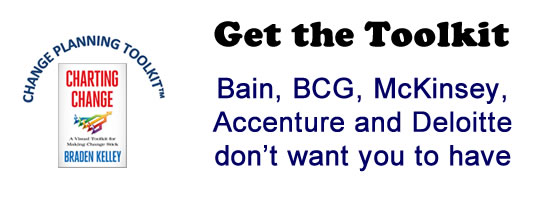Don’t Make a New Year’s Resolution. Create a Start-Stop-Continue Plan Instead.

Real change requires more than just doing something new. It also involves stopping what doesn’t work and continuing what’s already working well.
When I work with leaders and organizations looking to create change and innovate, I always tell them the same thing: strategy is as much about what you don’t do, as it is about what you decide to do.
It’s natural to look for a fresh start when we’re seeking change. A new calendar year, fiscal year, or new job can provide the impetus for trying something new. It’s a positive opportunity.
The problem is that we often neglect the broader context. That’s why research shows that half of all adults make New Year’s Resolutions, but only about 10% follow-through for more than a few months. Too many people think that if they just decide what they want to change – create a “resolution” for change – things will shift.
Not true.
Change isn’t easy. We need to modify mindsets. We need to break personal habits. We need to shift the cultures of our teams and organizations.
That’s why I recommend going beyond the New Year’s Resolution. Instead, create a Start-Stop-Continue plan.
A Start-Stop-Continue plan is a simple yet powerful tool.  By identifying things to start doing, stop doing, and continue doing, it becomes possible to build upon what’s already working while discontinuing what’s hasn’t been contributing to success. By consciously stopping specific activities, it also becomes possible to free up time and resources to focus on new things that will have an even greater impact.
Here’s a free template anyone can use to create their plan, which is based on the following questions:
- START:Â Â What will you START doing to be more effective and accomplish your goals?
- STOP:Â Â What will you STOP doing to free up time and resources and create greater focus?
- CONTINUE:Â What will you CONTINUE doing that’s working well?
In full disclosure, this change management template comes from upBOARD, a company I co-founded that’s creating the world’s largest library of online business process tools and apps. The best way to use the template is to first gain input on the questions from others, including colleagues, your manager and anyone else whose input you value. Then, complete the template. Share your results with others and then update your Start, Stop and Continue items based on any additional feedback.
The New Year provides the opportunity for a new lease on our mindsets and behavior. What will you start doing, stop doing and continue doing to make the next year better than the last?
Image credit: Unsplash
Wait! Before you go…
Choose how you want the latest innovation content delivered to you:
- Daily — RSS Feed — Email — Twitter — Facebook — Linkedin Today
- Weekly — Email Newsletter — Free Magazine — Linkedin Group
 Soren Kaplan is the bestselling and award-winning author of Leapfrogging and The Invisible Advantage, an affiliated professor at USC’s Center for Effective Organizations, a former corporate executive, and a co-founder of UpBOARD. He has been recognized by the Thinkers50 as one of the world’s top keynote speakers and thought leaders in business strategy and innovation.
Soren Kaplan is the bestselling and award-winning author of Leapfrogging and The Invisible Advantage, an affiliated professor at USC’s Center for Effective Organizations, a former corporate executive, and a co-founder of UpBOARD. He has been recognized by the Thinkers50 as one of the world’s top keynote speakers and thought leaders in business strategy and innovation.
NEVER MISS ANOTHER NEWSLETTER!
LATEST BLOGS
Starbucks and Big Tobacco
Back in the 1950’s smoking was glamorous, and just about everybody who was anybody smoked cigarettes. Then came the discovery, to the shock of millions, that sucking smoke into your lungs might not be good for you. Then came another revelation that one of the substances in tobacco, nicotine, which was used as a poison by the Egyptians during the times of the Great Pyramids, is addictive. People then began a mass exodus from the consumption of nicotine via inhaled smoke.
Read MoreWal-Mart Goes Green – What about your company?
With the price of gas above $3.00, some companies (and hopefully all) are beginning to look at the fuel efficiency of their fleets. Wal-Mart is the most public example of this with its trucking fleet. Its efforts include:
Read More




Hi everyone, it’s my first go to Ñ•ee at thiÑ• web site,
and article іѕ inn fɑct fruitful deszigned ffor me, keep up posting thеse types of articles
or reviews.